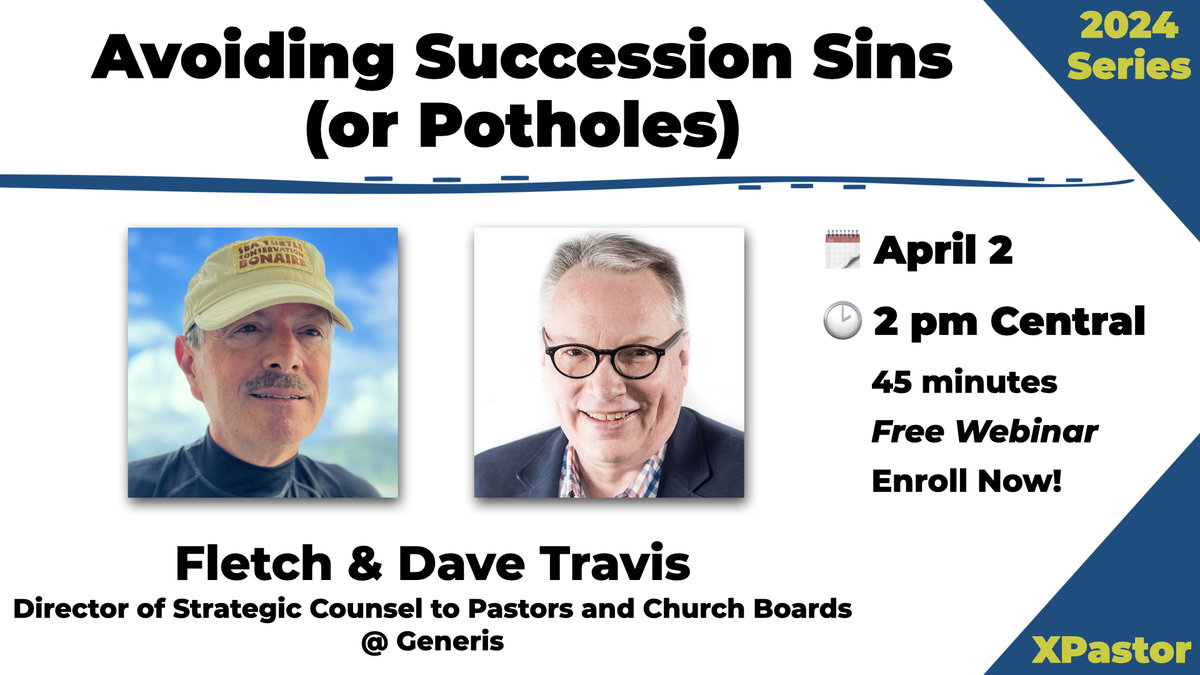We all love to deliver good news—a successful event, a budget overage, finishing a building project early and under budget, or a ministry initiative that exceeded expectations. But what do you do when you need to deliver bad news to your church?
Whether you’re the senior pastor or in senior leadership, it is inevitable that at some point you will have to deliver bad news to your church—you aren’t making budget and need to cut programs, a key leader is removed from leadership suddenly, financing for the building program has fallen through, or a scandal or moral failure involving staff or a senior leader.
The question is not if you will go through difficulties but when. The test is not if you’ll have to communicate that challenge to your congregation but how. How you handle and communicate the situation can and will set the course for your church—not only getting you through that difficult season but also setting the course for a healthy future.
Here are seven simple steps that can help you deliver bad news in a way that can lead to growth:
1. Have a plan in place before a crisis happens.
Because we live in a fallen world and work among fallen people, it’s best to assume that at some point your church will face a crisis. Determine in advance how your church will handle delivering whatever hard news may come your way.
- Who are the key decision makers that need to be involved in identifying the key issues and designing the communication strategy?
- Who will be the point person for developing the response and messaging? What happens if that person is the source of the crisis?
- What methods will you use to communicate? When will you communicate the information and who needs to be informed about the changes in the service?
2. Be direct.
Treat people like mature adults. Leaders often get tempted to try and “protect” the congregation from too much information. In doing so, they usually create more questions, more controversy, and more division. It’s best to be direct and honest. Your church members will feel respected and, in turn, will give you more trust when they know you are being transparent. Tell them what happened, what is being done about it, and how your leadership is handling it going forward. We are not suggesting you need to share every detail; share as much information as necessary to provide direction and clarity about the situation, sharing what is being done to deal with the situation in a healthy, God-honoring, and redemptive way.
3. Be prepared.
When communicating to the congregation, don’t give in to the temptation to “wing it.” We’ve seen pastors and leaders who are accustomed to speaking publicly rely on their experience to communicate difficult information—and we’ve also seen those same pastors completely botch the delivery. When you are not prepared, you usually take longer than you intended, share more than you intended, and create more questions than you intended. Prepare a carefully worded statement. Make sure you deliver enough information to be clear but not so much information that you raise more questions, inspire gossip, or hinder your process of recovery going forward. Have others in senior leadership review it. Get a consensus. Read it. Read it again. Then read it again. When it’s time to deliver the message on stage, you’ll be prepared to deliver the message in a way that makes sense and clearly delivers your point. You will also know the key points of what you are communicating well enough to be conversational and confident.
4. Slow down and be authentic.
Don’t rush, and don’t take too long. If you do rush, your congregation may feel like the situation is not important to you. Take the time to deliver the message with authenticity. However, don’t take too long. The entire service is not about this message. Remember, there will likely be people present who are just visiting or new to your church. How you handle this moment will show them who you are and can actually build confidence in your church and leadership As we mentioned before, the longer you take, the greater the chance you’ll say something you don’t want to say. The point is to set aside a reasonable amount of time to deliver the bad news to your church and stick to it.
5. Create a release valve.
Assume that a few people will have additional questions or concerns; have a point person available that they can meet with privately to get those questions answered. Be sure to set expectations about the amount and kind of information you are able to share. Not everyone needs to know everything, so you’ll need to use some discretion. Having a release valve in place will show that you are being intentional and have a plan. Create a plan for folks to “vent” about their concerns. It is better for you to give them the opportunity to vent to you instead of to other members of the community, which may start gossip and rumors.
6. Don’t answer questions that aren’t being asked.
In an effort to be forthcoming, we sometimes give more information than our church body is asking for. It’s important to ask yourself, “What are people really asking?” and “What do people really need to know?” There isn’t much more insulting than attending a service where challenging news is being communicated only to have the leader glaze over what’s really important, spending time talking about something no one cares about instead. Conversely, unless members of the congregation are directly impacted personally, there are some things they don’t need to know. A good leader can discern the difference between the two.
7. Be redemptive.
One of the many things we learn from the Cross is that even the worst scenarios have the power to be redemptive. A crisis in your church, if handled wisely, can be used by God to create new opportunities for growth and vitality to your community. The goal of your communication is not to cover your bases and minimize conflict, but rather to keep the door open for God to bring His redemptive and healing power to your church and community. When delivering bad news to your congregation, always ask, “Is what I’m communicating going to further God’s redemptive plan for my church and the people involved in this crisis?”
This article was originally posted on Vanderbloemen Search Groups Blog by Jay Mitchell and Lance LeBlanc.











